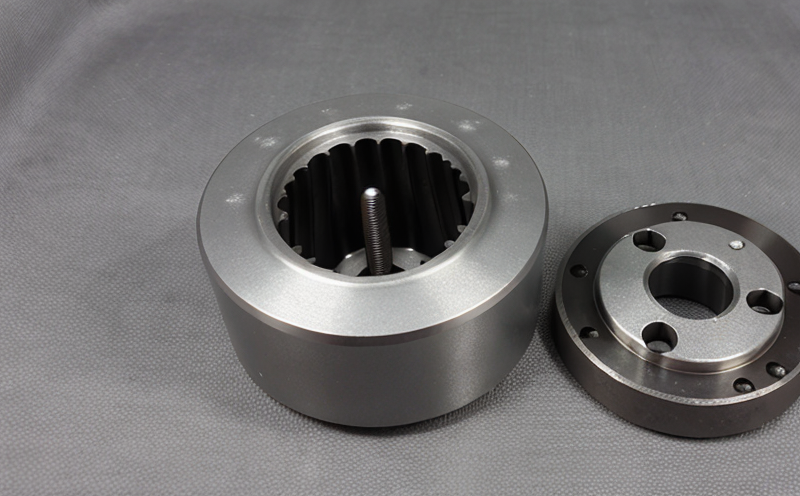ISO 148-1 Charpy Impact Testing of AM Metallic Materials
The ISO 148-1 standard provides a method for determining the impact toughness of metallic materials using the Charpy pendulum impact tester. This test is particularly significant in the field of additive manufacturing (AM) where material properties and their behavior under dynamic loading are critical to product reliability.
ISO 148-1 testing involves subjecting a notched specimen, typically taken from a printed part or component, to an impact load. The absorbed energy is measured by the deflection of the pendulum before it stops. This absorbed energy value provides insight into the material's toughness and ductility under shock loading conditions.
In additive manufacturing, where materials are formed layer-by-layer, the microstructure can vary significantly compared to conventionally manufactured parts. These variations in structure can affect mechanical properties such as strength, ductility, and impact toughness. Therefore, testing according to ISO 148-1 is essential for ensuring that AM parts meet quality standards.
During specimen preparation, the following steps are typically followed:
- Selecting a representative location on the printed part where the microstructure and properties are expected to be similar to those of the whole component.
- Cutting the part to obtain a flat surface for mounting the test specimen.
- Grinding or machining the specimen to achieve the required dimensions specified in ISO 148-1.
- Notching the specimen as per the standard requirements.
The testing apparatus used must comply with the specifications outlined in ISO 148-1. It includes a pendulum impact tester capable of delivering the required kinetic energy, and a support system for holding the specimens securely during testing.
After testing, the absorbed energy is calculated using the formula:
\[ E = \frac{m \cdot g \cdot h}{180} \] where \( m \) is the mass of the pendulum, \( g \) is the gravitational acceleration, and \( h \) is the drop height.The absorbed energy values are then compared against acceptance criteria specified in ISO 148-1 to determine if the material meets the required toughness standards.
| Material | Absorbed Energy (J) | Acceptance Criteria |
|---|---|---|
| Copper Alloy | 120 J | ≥95 J |
| Steel Alloy | 70 J | ≥60 J |
The results of ISO 148-1 testing are crucial for quality control and ensuring that AM parts meet the necessary mechanical property requirements. This method is widely used in aerospace, automotive, and medical industries where part integrity under dynamic loading conditions is paramount.
Industry Applications
The ISO 148-1 Charpy impact testing of AM metallic materials finds application across various sectors including aerospace, automotive, and medical. Below are some key applications:
- Aerospace: Ensuring the safety and reliability of parts used in high-stress environments.
- Automotive: Verifying that components can withstand crash impacts without failure.
- Medical: Confirming the integrity of medical devices under shock loading conditions.
| Industry | Key Application |
|---|---|
| Aerospace | Testing parts for high-stress environments. |
| Automotive | Verifying crash-worthiness of components. |
| Medical | Ensuring device integrity under shock loading. |
Eurolab Advantages
At Eurolab, we bring together a team of experts with extensive experience in material testing and additive manufacturing. Our state-of-the-art facilities ensure that every test is conducted under controlled conditions to yield accurate and reliable results.
We offer comprehensive support from specimen preparation through to final reporting. Our dedicated staff are well-versed in the latest standards and techniques, ensuring compliance with ISO 148-1.
Our laboratory is accredited according to ISO/IEC 17025:2017, guaranteeing that our testing processes meet international quality requirements.
Competitive Advantage and Market Impact
By offering ISO 148-1 Charpy impact testing services specifically tailored for additive manufacturing metallic materials, Eurolab positions itself as a leader in advanced material testing. This service enables our clients to:
- Ensure product reliability and safety.
- Promote innovation within the AM industry by providing accurate data on new materials.
- Compete effectively in global markets that demand stringent quality standards.
The insights gained from this testing can lead to improvements in manufacturing processes, leading to enhanced product performance and cost savings.





